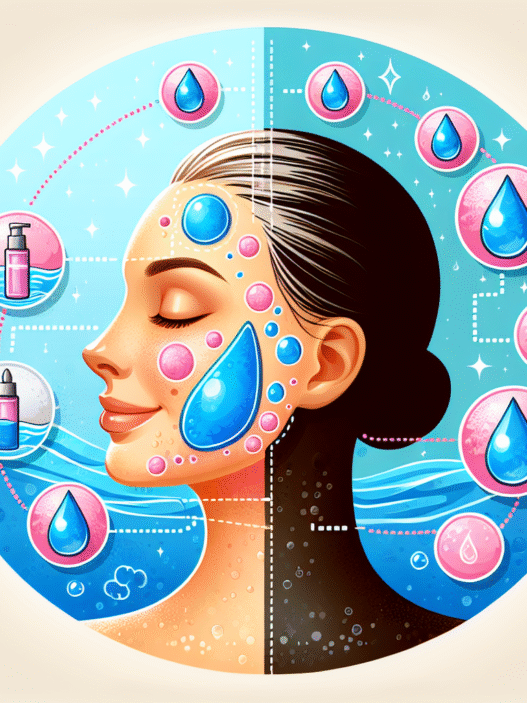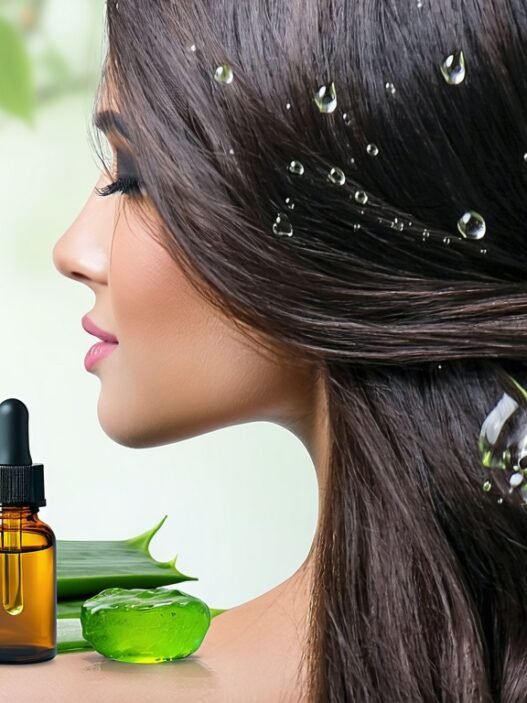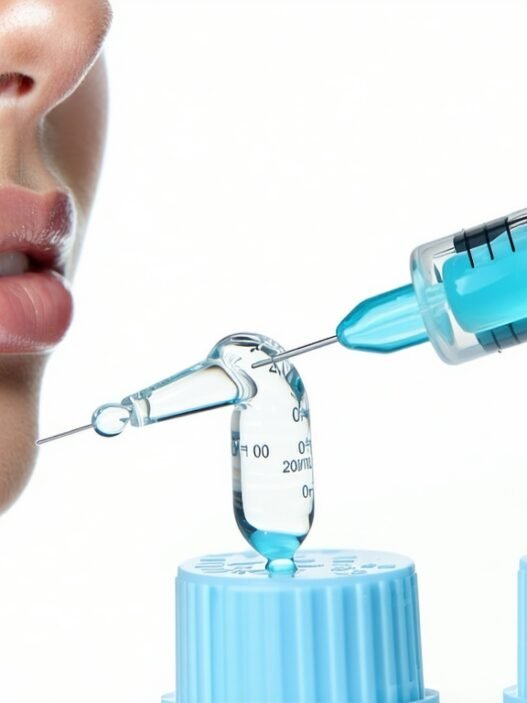Hyaluronic Acid and Skin Health
Understanding the connection between hyaluronic acid and skin health is essential for anyone looking to maintain a radiant complexion. This powerful molecule not only plays a vital role in skin hydration but also impacts the overall appearance of skin as it ages.
Role of Hyaluronic Acid in Skin
Hyaluronic acid is a naturally occurring substance found in the body, particularly in the skin, where it binds to water molecules. This binding capability helps maintain hydration and keeps the skin looking supple and plump. According to Medical News Today, the presence of hyaluronic acid in the skin serves as a reservoir of moisture, playing a crucial role in skin elasticity and overall health.
| Function | Description |
|---|---|
| Hydration | Binds water to keep skin hydrated |
| Elasticity | Maintains skin’s suppleness |
| Wound Healing | Aids in the inflammatory response during healing |
Topical applications of hyaluronic acid have been shown to improve skin hydration significantly. A study in 2021 involving females aged 30 to 65 found that applying hyaluronic acid twice daily led to notable improvements in skin hydration levels.
Effects of Aging on Hyaluronic Acid Levels
As individuals age, their bodies produce less hyaluronic acid, leading to various skin issues such as dehydration, increased dryness, and the formation of wrinkles. The reduced levels of hyaluronic acid contribute to a loss of skin elasticity and volume, making the skin appear more aged and less vibrant. Cleveland Clinic emphasizes that maintaining adequate hyaluronic acid levels is essential for youthful skin.
| Age Group | Average Hyaluronic Acid Levels |
|---|---|
| 20s | High levels, skin appears supple |
| 30s | Moderately decreased levels, slight dryness |
| 40s and 50s | Notable decrease in levels, visible wrinkles |
Integrating foods high in hyaluronic acid into one’s diet can help support skin health and combat the effects of aging. Recommendations for individuals seeking to boost their levels of hyaluronic acid include incorporating various nutrient-rich foods into their meals. For more information, explore our section on what foods are high in hyaluronic acid?.
Benefits of Hyaluronic Acid
Hyaluronic acid offers numerous benefits for skin health, particularly regarding hydration and skin aging, as well as wound healing properties.
Hydration and Skin Aging
Hyaluronic acid is naturally occurring in the skin, where it binds to water molecules to help keep the skin hydrated and supple. It plays a crucial role in maintaining skin moisture, and as individuals age, the levels of hyaluronic acid in the skin decrease. This decline can lead to dehydrated skin and the formation of wrinkles and fine lines (Medical News Today).
Topical application of hyaluronic acid has been shown to significantly improve skin hydration and reduce signs of aging. For instance, a 2021 study involving females aged 30 to 65 indicated that applying topical hyaluronic acid twice daily improved skin hydration. Additionally, a 2023 study reported that oral hyaluronic acid not only boosts skin hydration but also enhances skin tone and epidermal thickness (Medical News Today).
This ability to retain moisture is essential for preventing the early signs of aging and keeping the skin looking youthful and vibrant. For those interested in understanding more about the effects of hyaluronic acid, visit our article on what does hyaluronic acid do to your skin?.
| Age Group | Improvement in Skin Hydration |
|---|---|
| 30-40 years | Moderate |
| 40-50 years | Significant |
| 50-65 years | Very Significant |
Wound Healing Properties
In addition to its hydrating effects, hyaluronic acid has notable wound healing properties. Its role in tissue repair makes it beneficial for addressing skin injuries and surgical wounds. Hyaluronic acid helps regulate inflammation levels and signals the body to build new tissue.
This repair process is essential for restoring skin integrity and can accelerate the healing of various skin conditions. Hyaluronic acid’s ability to retain moisture also contributes to a better healing environment by keeping the area hydrated, which is critical for wound recovery.
In essence, this compound not only aids in preventing signs of aging by hydrating the skin but also fortifies its natural healing processes. For further insights on how hyaluronic acid can impact skin issues such as dark spots and wrinkles, check our articles on does hyaluronic acid remove dark spots? and does hyaluronic acid help wrinkles?.
Hyaluronic Acid in Osteoarthritis
Hyaluronic acid has garnered attention for its role in managing osteoarthritis, a degenerative joint disease that affects many individuals, particularly as they age.
FDA-Approved Injections
Hyaluronic acid injections are FDA-approved for alleviating knee pain in patients with mild to moderate osteoarthritis when other treatments have proven ineffective. These injections are designed to supplement the natural hyaluronic acid present in the joint fluid, providing cushioning and lubrication. According to Medical News Today, studies indicate that these injections are generally safe and effective, although some individuals may experience localized swelling and pain following treatment.
Effectiveness and Safety of Injections
Research suggests that hyaluronic acid can effectively reduce joint pain for those suffering from osteoarthritis. The efficacy of these injections is particularly noted in individuals aged 40 to 70 years, who have reported significant reductions in knee pain when receiving hyaluronic acid treatment. In fact, a safe daily dosage of hyaluronic acid supplements—ranging from 80 to 200 mg for at least two months—has also shown promise in relieving knee pain in osteoarthritis patients (Healthline).
However, while hyaluronic acid injections may yield a small reduction in pain, they do carry a risk of adverse effects, necessitating a consultation with a healthcare provider before starting any treatment regimen. It’s important to ensure that any approach to managing osteoarthritis is tailored to one’s specific health needs and conditions (Cleveland Clinic).
| Treatment Method | Effectiveness | Safety Profile |
|---|---|---|
| Hyaluronic Acid Injections | Effective for knee pain relief | Generally safe, may cause swelling and localized pain |
| Oral Hyaluronic Acid Supplements | Significant pain reduction reported | Considered safe; consult healthcare provider |
Hyaluronic acid not only aids in symptom management for osteoarthritis but has also been suggested to promote wound healing, reduce inflammation, and support overall joint health (Amala Beauty). This multifaceted approach makes it a valuable component in the pursuit of joint health and relief from osteoarthritis symptoms.
Sources of Hyaluronic Acid
Understanding the sources of hyaluronic acid can help beauty and skincare enthusiasts incorporate it into their diets. This section covers natural food sources as well as supplementation and application methods.
Natural Sources in Foods
Hyaluronic acid can be found in a variety of foods, which can aid in increasing the body’s natural levels of this essential compound. Some notable food sources include:
| Food Category | Examples | Benefits |
|---|---|---|
| Bone Broth | Homemade or store-bought | Rich in nutrients like proline and glutamine, improves skin elasticity and hydration (Healthline) |
| Soy-Based Foods | Tofu, tempeh, soy milk | High in isoflavones, which may boost hyaluronic acid production (Healthline) |
| Leafy Greens | Spinach, kale, collard greens | Rich in magnesium, which supports hyaluronic acid synthesis (Healthline) |
| Root Vegetables | Sweet potatoes, carrots | Contain beta-carotene, which can help maintain skin health (Healthline) |
Incorporating these foods into a balanced diet can help keep skin hydrated and tissues lubricated.
Supplementation and Application
For those seeking additional ways to boost their hyaluronic acid levels, supplementation may be an effective option. Various supplements are available, including pills and powders. These can help promote skin hydration and elasticity when taken regularly.
Topical applications are also popular, with serums and creams containing hyaluronic acid available on the market. These products can enhance moisture retention on the skin’s surface, making them beneficial for those looking to improve their skin’s overall appearance what does hyaluronic acid do to your skin?.
It is important to note that the use of hyaluronic acid products should be considered carefully. Some individuals may wonder about potential interactions, such as what not to mix with hyaluronic acid?. Users should research and possibly consult a dermatologist to ensure that they are utilizing hyaluronic acid effectively and safely.
By understanding the various sources of hyaluronic acid, including dietary options and topical products, individuals can make informed choices to promote healthy, radiant skin.
Foods High in Hyaluronic Acid
Including foods high in hyaluronic acid can significantly benefit skin health. While this compound is primarily found in certain food sources, other nutritional elements play a vital role in supporting its production in the body.
Nutrient-Rich Bone Broth
Bone broth is one of the best natural sources of hyaluronic acid. This flavorful liquid is made by simmering animal bones for hours, allowing the nutrients to leach out. It is rich in collagen, which works synergistically with hyaluronic acid to maintain skin elasticity and hydration. Foods derived from animal sources, particularly fresh fish such as salmon, mackerel, and mussels, as well as liver and bone broth, excel at providing the body with the building blocks it needs to produce hyaluronic acid (L’Oreal Paris, Amala Beauty).
| Food Type | Key Nutrients | Hyaluronic Acid Content |
|---|---|---|
| Bone Broth | Collagen, Amino Acids | High |
| Fresh Fish | Omega-3 Fatty Acids, Protein | Moderate |
| Liver | Vitamins A and B12 | Moderate |
Citrus Fruits and Vitamin C
Citrus fruits, including oranges, lemons, and grapefruits, are not direct sources of hyaluronic acid but play a crucial role in its synthesis. These fruits are rich in vitamin C, which is essential for collagen production in the body. Collagen and hyaluronic acid work together to maintain skin moisture and firmness. Therefore, incorporating vitamin C-rich foods naturally supports the body’s ability to create hyaluronic acid (Source).
| Citrus Fruit | Key Nutrient | Vitamin C Content (mg per 100g) |
|---|---|---|
| Orange | Vitamin C | 53 |
| Lemon | Vitamin C | 53 |
| Grapefruit | Vitamin C | 34 |
Including these foods in a diet can significantly promote skin hydration and overall vitality. Understanding what foods are high in hyaluronic acid allows beauty and skincare enthusiasts to make informed choices for their skincare regimen. For a deeper look into how hyaluronic acid benefits the skin, check our article on what does hyaluronic acid do to your skin?.
Dietary Support for Hyaluronic Acid
Eating a diet rich in certain foods can enhance the body’s ability to produce hyaluronic acid, contributing to vibrant and healthy skin. Two important categories of foods that support hyaluronic acid levels are leafy greens and root vegetables.
Leafy Greens and Magnesium
Leafy greens, such as spinach, kale, and lettuce, are excellent sources of magnesium. This mineral plays a crucial role in the production of hyaluronic acid in the body (Healthline). Along with magnesium, leafy greens are packed with vitamins and antioxidants that help protect the skin from premature aging, thereby keeping it soft and radiant.
| Leafy Green | Magnesium Content (mg per 100g) |
|---|---|
| Kale | 47 |
| Spinach | 79 |
| Romaine Lettuce | 14 |
These greens not only support hyaluronic acid levels but also provide additional health benefits, enhancing skin texture and overall appearance. For more details on how hyaluronic acid benefits the skin, check our article on what does hyaluronic acid do to your skin?.
Root Vegetables and Beta-Carotene
Root vegetables such as sweet potatoes, carrots, and beets are rich in starch, magnesium, and beta-carotene. Beta-carotene converts to vitamin A in the body, which is essential for maintaining a healthy skin barrier and promoting the skin’s natural moisture retention. The combination of these nutrients enhances the body’s ability to produce hyaluronic acid and supports skin vitality by protecting against UV damage and contributing to a youthful glow (L’Oreal Paris).
| Root Vegetable | Beta-Carotene Content (µg per 100g) |
|---|---|
| Sweet Potato | 1,100 |
| Carrot | 1,100 |
| Beetroot | 37 |
Incorporating these root vegetables into one’s diet can effectively enhance skin health and hydration levels. For additional insights on the effects of hyaluronic acid on wrinkles, visit does hyaluronic acid help wrinkles?.
By adding leafy greens and root vegetables to one’s diet, individuals can support their skin health and boost their hyaluronic acid levels naturally.





















